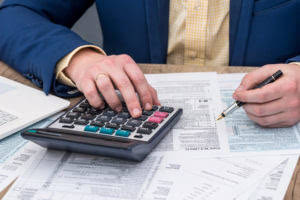
In simpler terms, the scrap value is what a company expects to receive in exchange for the sale of the asset after its useful life. After 10 years, the value of the same machinery is determined to be Rs.10,000. The salvage value is also significant when determining the depreciation schedule.

How to Calculate Salvage Value?

The after tax salvage value online calculator provides us the after-tax value of the salvage of the asset. The car salvage value calculator is going to find the salvage value of the car on the basis of the yearly depreciation value. The salvage or the scrap value is estimated when the useful life of an asset is over and can’t be used for its original purpose. Moving on, let’s look through the details of how the salvage value can be used in depreciation calculations. We can also define the salvage value as the amount that an asset is estimated to be worth at the end of its useful life.
Challenges in Salvage Value Accounting
- Residual value is what an asset is expected to be worth at the end of its use.
- The salvage value is calculated to know the expected value or resale value of an asset over its useful life.
- This may also be done by using industry-specific data to estimate the asset’s value.
- A manufacturer’s budget for a machine includes its effective life, number of units it can produce, working life, installation costs, and cost of replacement.
- Let’s say the company assumes each vehicle will have a salvage value of $5,000.
Third, companies can use historical data and comparables to determine a value. Assume company X purchased a piece of new machinery costing approximately Rs.10,00,000 with a useful life of 20 years. Salvage value is crucial because it is the book value or an estimated value of a specific asset after the depreciation has been completely expensed. In other words, it influences the final depreciable amount used by an organisation to determine its depreciation schedule.
- A salvage value of zero is reasonable since it is assumed that the asset will no longer be useful at the point when the depreciation expense ends.
- Residual value is what you expect to get back when you’re ready to sell or dispose of something—whether it’s a piece of equipment, a vehicle, or a building.
- The salvage calculator reduces the loss and assists in making a decision before all the useful life of the assist has been passed.
- The depreciable base is then divided by the asset’s useful life to calculate the annual depreciation amount.
- Sometimes, salvage value is just what the company believes it can get by selling broken or old parts of something that’s not working anymore.
Leasing Agreements and Buyout Prices
Instead, we empower you to choose wisely by offering real-world insights and support. Everything we create is built on trust, transparency and a commitment to clarity so that you can move forward with confidence every step of the way. We maintain strict editorial independence to ensure unbiased coverage of the insurance industry. Before taking a salvage car to the public roads, ensure it’s fully repaired and approved by professional inspection. A vehicle inspected to meet road safety standards can obtain a rebuilt title. However, even rebuilt title cars may not regain a resale value comparable to a vehicle with a clean title.
In contrast, when the scrap value is set too low, the net income could be understated, and the depreciation may be overstated. The salvage value also helps with tax deductions and overall liability calculations. Wrong calculations of the residual Sales Forecasting value can lead to mismatched profits and sometimes unaccountability.
Then, deduct 20% to 40% of the amount, which will give you an estimate of the vehicle’s salvage value. The original price or initial cost of an asset includes its purchase price, installation costs, and any other expenses incurred to bring the asset to a usable state. Depreciation, on the other hand, is the systematic allocation of the cost of an asset over its useful life. It is a method of recognizing the decline in value and the wear and tear of an asset over time.
A depreciation schedule helps you with mapping out monthly or yearly depreciation. Once you know the salvage value, you may go ahead to calculate depreciation. We salvage value can see this example to calculate salvage value and record depreciation in accounts.

How to Calculate NoPAT and Optimize Business Performance

The percentage of cost method multiplies the original cost by the salvage value percentage. B) Multiply the asset’s current book value by the depreciation rate each year. The estimated salvage value is deducted from the cost of the asset to determine the total depreciable amount of an retained earnings asset. To depreciate these assets appropriately, the company may depreciate the net of the cost and the salvage value of the useful life of the assets. This estimate is taken into consideration for the future since no one can really tell the state of assets after their useful life has passed.
Residual value, also referred to as salvage value, is the estimated remaining worth of an asset at the end of its expected useful life. It reflects what an asset can be sold for after depreciation or how much remains at the end of a lease agreement. Residual value is commonly used in accounting, leasing agreements and capital budgeting.
